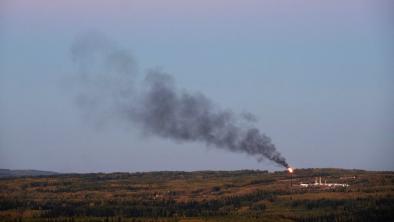Tyson Creek ‘experiment’ ought not to be repeated
Globe and Mail

There have been growing concerns in British Columbia about the impact of private power projects on streams and rivers.
But we should worry about our lakes, too, according to a file of internal government documents related to the Tyson Creek hydroelectric project.
The documents, obtained by Gwen Barlee of the Wilderness Committee, track the licensing, development and subsequent but temporary closing of the project when it caused the usually clear Tzoonie River to turn the colour of mud.
Ms. Barlee says there are currently “over 30 alpine lakes staked [claims made for power generation] by private power companies in B.C.,” and she wanted to take a close look at how the Tyson Creek project was handled, because it is the first run-of-river project in the province that also generates power by drawing down water from a lake. In effect, they’re using lakes as hydro reservoirs, so-called lake storage, to generate power when river water levels are low.
She says that what she saw in the records disturbed her.
“After reviewing the documents, we were surprised by the lack of checks and balances when it came to alpine lake-storage power developments. … I don’t think the government’s got a handle on this at all,” she said.
The documents show the project, owned and managed by Renewable Power, was proposed in 2005 and moved fairly rapidly through the licensing and approval stages.
A timeline prepared by Scott Babakaiff, regional fish hydrologist with the provincial Ministry of Environment, notes that “lake storage was not clearly (or consistently) described” in the company’s initial development plan.
That concern was raised again in December, 2006, in a Ministry of Environment (MOE) review of the proposal that noted there was still “inadequate information to justify proposed lake storage.”
But that didn’t stop the project. In December, 2007, the MOE’s water stewardship division issued a water licence, giving the company the green light to proceed – although the MOE’s environmental stewardship division didn’t learn about that until February, 2008, two months later.
That wasn’t the only communication problem. Mr. Babakaiff notes that he learned in July “that construction had been proceeding for several months.”
In March, 2009, the company amended its original run-of-river plan, and the government file notes the new proposal was to generate electricity by drawing down Tyson Lake by 30 metres or more.
At this point, the environmental stewardship division raised objections, saying an amended water licence should not be issued until “the ecological risks” are fully considered.
But nothing in the file suggests those risks were examined.
In January, 2010, the company got leave to begin operations and started drawing water out of Tyson Lake because the flow rates were so low in the river. One problem independent power projects face is that in winter, when the demand for power is highest, the flow levels are lowest. And that makes drawing from a lake very attractive.
But one month after the Tyson Creek hydroelectric project booted up, the government was flooded with phone calls from people reporting the Tzoonie River, downstream of the power plant, was pouring muck into the ocean.
According to a government report, the problem was caused when Tyson Lake was drawn down 10 metres below natural levels, creating “a sediment incident related to erosion of a delta.”
Silt flowed out of the lake, through the power plant, and into the river downstream.
The project was halted temporarily. A flurry of meetings and memos ensued. And now the project is back up, not drawing down the lake as much, and apparently avoiding any more siltation problems.
One Ministry of Environment memo ends with this telling comment: “We have viewed Tyson as a large experiment in many ways. Right or wrong, we have a poor understanding of the effects of negative storage [or drawing down a lake] that begs some tough questions.”
Another document advises staff they “will see many more” such projects proposed in the future and then it adds: “MOE still has no guidelines … to allow agency assessment of ecological impacts associated with such proposals.”
Judging by how the first experiment went, those guidelines need to be in place before the next power company starts drawing down a lake.


